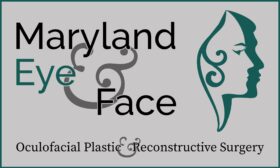Involuntary, sustained, or intermittent muscle contractions in the face—such as twisting, abnormal postures, and other repetitive movements—can cause embarrassment and a decrease in self-confidence. These involuntary movements are manifestations or symptoms of a neurological condition called facial dystonia. These symptoms can affect the eyelids, the mouth, and the jaw, significantly impacting daily life by affecting speech, facial expressions, and even vision. What causes facial dystonia? The answer to this question is the first step toward effective diagnosis, treatment, and support. If you or someone close to you has facial dystonia, it will be good to consult an oculoplastic surgeon to determine if oculoplastic surgery will help address the problem.
What Causes Facial Dystonia?
The causes of facial dystonia can be categorized into two:
Primary Dystonia
Although it is typically considered idiopathic or genetically linked, the exact cause is still unknown.
Secondary Dystonia
This is the type of dystonia that may result from brain injury, stroke, infection, side effects of medications, or exposure to certain toxins.
Neurological Origins
The underlying cause of facial dystonia lies in the basal ganglia, which has a significant role in controlling movement. Normally, there is a delicate balance of neurotransmitters and dopamine, which results in smooth, purposeful muscle movements. In patients with dystonia, this balance is disrupted, leading to excessive or inappropriate muscle activation.
Researchers say that the abnormal muscle contractions observed in dystonia may be attributed to the faulty communication between neurons in the motor pathways. This results in wrong signals that cause muscles to contract when they should not or to relax when they should do the opposite.
Genetic Factors
Genetics may play a role, especially in cases of early-onset dystonia or in patients who have a history of movement disorders in their family. There are also specific gene mutations that are associated with different types of dystonia. However, these gene mutations are more commonly linked to generalized dystonia rather than facial dystonia.
The problem is, despite suspicions of a genetic cause, the wide variety of symptoms—even among family members—makes diagnosis challenging.
Environmental and Acquired Causes
Facial dystonia can also be acquired through:
- Trauma or Injury: Damage to the brain—especially to areas that are responsible for controlling movement—may lead to dystonia. Traumatic brain surgery or injury may lead to abnormal muscle control.
- Infections: Infections in the central nervous system, such as encephalitis, may cause inflammation that disrupts normal neural activity.
- Stroke: Patients who suffer a stroke affecting the basal ganglia or motor pathways can result in focal dystonia, including in the facial muscles
- Medications: Drugs may also cause facial dystonia. Antipsychotics and anti-nausea drugs that block dopamine receptors are known to cause drug-induced dystonia. This may be sudden and is known as an acute dystonic reaction, a common problem presented to the emergency department. Symptoms may appear alone or in combination with others.
- Toxins: Exposure to heavy metals or carbon monoxide can also lead to dystonia because it can result in damage to the brain.
Stress and Fatigue as Triggers
Stress and fatigue on their own do not cause dystonia. However, they can worsen the symptoms or trigger episodes in people who already have dystonia. Patients who experience emotional distress, lack of sleep, or physical exhaustion may observe an increase in the frequency or intensity of their symptoms.
Can Facial Dystonia Be Prevented?
Complete prevention may not always be possible because some cases are idiopathic or genetic. However, there are ways to reduce the risk of developing secondary or acquired dystonia:
- Be Careful with Medications: Avoid long-term or high-dose use of dopamine-blocking medications unless you absolutely have to. Always consult a doctor before starting or stopping any medication, whether prescribed or not.
- Avoid Toxins and Harmful Substances: Avoid exposure to neurotoxins, including heavy metals, carbon monoxide, and industrial chemicals. If exposure cannot be prevented, wear protective gear and ensure proper ventilation.
- Protect the Brain: Protect yourself from head trauma. Wear helmets during sports or motorcycle rides. Take extra steps to prevent falls.
- Manage Chronic Health Conditions: Diabetes, high blood pressure, and high cholesterol increase the risk of stroke, which can cause dystonia.
- Regular Neurological Checkups: Those who have a family history of neurological conditions or have experienced trauma may catch signs of dystonia before they worsen with the help of early screening and monitoring.
Facial dystonia is a complex condition that is often misunderstood. Although the causes of dystonia can range from genetic to environmental, early detection is essential to addressing the condition.
Facial Dystonia Treatment in Maryland
If you or someone you know is experiencing unusual and unintentional facial movements, seek medical care immediately. Schedule a consultation with us today so you can familiarize yourself with the different facial dystonia treatments and be empowered to choose the best treatment for your condition.

